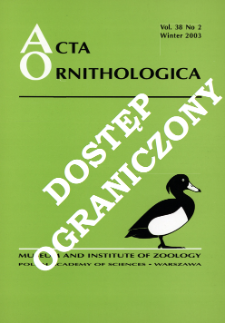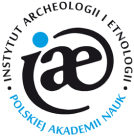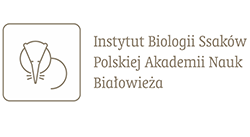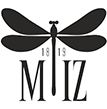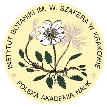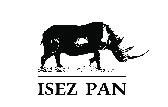- Search in all Repository
- Literature and maps
- Archeology
- Mills database
- Natural sciences
Advanced search
Advanced search
Advanced search
Advanced search
Advanced search

Object
Title: The abundance of tree holes and their utilization by hole-nesting birds in a primeval boreal forest of Mongolia
Twórca:
Bai, Mei-Ling (1975– ) ; Wichmann, Frank ; Mühlenberg, Michael (1944– )
Data wydania/powstania:
Typ zasobu:
Inny tytuł:
Acta Ornithologica, vol. 38, no. 2 ; Obfitość dziupli i ich wykorzystanie przez ptaki w pierwotnym lesie tajgowym Mongolii ; Abundance and utilization of tree holes
Współtwórca:
Polska Akademia Nauk. Muzeum i Instytut Zoologii
Wydawca:
Miejsce wydania:
Opis:
Bibliogr. s. 101-102 ; S. [95]-102 : il. ; 27 cm ; Streszcz. pol. Nazwy taksonów także w jęz. łac.
Typ obiektu:
Abstrakt:
The natural tree holes and nest holes of hole-nesting birds were surveyed in four forest types in the west Khentii Mountains of NE Mongolia. The utilization patterns of species, size and condition of trees, as well as hole types, were investigated. The average density of tree holes in the study area approached 30 holes/ha, while that of hole-nesting birds was 2.4 nests/ha only. The riparian mixed forest had the greatest number of species and individuals of hole-nesting birds, while the spruce-fir forest had the lowest numbers. Excavating bird species preferred larger, deciduous trees, and snags. Non-excavators did not select holes according to tree species or size, but preferred holes in living trees and branch holes. In view of the low occupancy of holes among the four habitats, we suggest that the density of secondary hole-nesting birds is not limited by availability of holes in the study area.
Czasopismo/Seria/cykl:
Tom:
Zeszyt:
Strona pocz.:
Strona końc.:
Szczegółowy typ zasobu:
Format:
Identyfikator zasobu:
Źródło:
MiIZ PAN, patrz sygn. czas. P.257-38-2 ; MiIZ PAN, patrz sygn. czas. P.4568-38-2 ; click here to follow the link
Język:
Prawa:
Prawa zastrzeżone - dostęp ograniczony
Zasady wykorzystania:
Digitalizacja:
Muzeum i Instytut Zoologii Polskiej Akademii Nauk
Lokalizacja oryginału:
Biblioteka Muzeum i Instytutu Zoologii PAN
Dofinansowane ze środków:
Program Operacyjny Innowacyjna Gospodarka, lata 2010-2014, Priorytet 2. Infrastruktura strefy B + R ; Unia Europejska. Europejski Fundusz Rozwoju Regionalnego
Dostęp:
Object collections:
- Repozytorium Cyfrowe Instytutów Naukowych > Kolekcje Partnerów > Muzeum i Instytut Zoologii PAN > Czasopisma
- Repozytorium Cyfrowe Instytutów Naukowych > Kolekcje Partnerów > Muzeum i Instytut Zoologii PAN > Wydawnictwa MiIZ PAN > Acta Ornithologica
- Repozytorium Cyfrowe Instytutów Naukowych > Piśmiennictwo > Czasopisma/Artykuły
Last modified:
4 lut 2025
In our library since:
10 cze 2014
Number of object content downloads / hits:
46
All available object's versions:
https://rcin.org.pl./publication/55598
Show description in RDF format:
Show description in RDFa format:
Show description in OAI-PMH format:
Objects Similar
Bai, Mei-Ling (1975– ) Wichmann, Frank. Mühlenberg, Michael (1944– ) Polska Akademia Nauk. Muzeum i Instytut Zoologii.
Pinowska, Barbara Pinowski, Jan
Domaniewski, Janusz (1891–1954)
Maheswaran, Balaraman Balasubramanian, Paramasivam
Mitrus, Cezary Walankiewicz, Wiesław Czeszczewik, Dorota Jabłoński, Piotr M.
Skuratowicz, Wacław (1915–1989) Państwowe Wydawnictwo Naukowe (1951–1992) Polska Akademia Nauk. Instytut Zoologii
Mazgajski, Tomasz D.
Bursell, Jens

 INSTYTUT ARCHEOLOGII I ETNOLOGII POLSKIEJ AKADEMII NAUK
INSTYTUT ARCHEOLOGII I ETNOLOGII POLSKIEJ AKADEMII NAUK
 INSTYTUT BADAŃ LITERACKICH POLSKIEJ AKADEMII NAUK
INSTYTUT BADAŃ LITERACKICH POLSKIEJ AKADEMII NAUK
 INSTYTUT BADAWCZY LEŚNICTWA
INSTYTUT BADAWCZY LEŚNICTWA
 INSTYTUT BIOLOGII DOŚWIADCZALNEJ IM. MARCELEGO NENCKIEGO POLSKIEJ AKADEMII NAUK
INSTYTUT BIOLOGII DOŚWIADCZALNEJ IM. MARCELEGO NENCKIEGO POLSKIEJ AKADEMII NAUK
 INSTYTUT BIOLOGII SSAKÓW POLSKIEJ AKADEMII NAUK
INSTYTUT BIOLOGII SSAKÓW POLSKIEJ AKADEMII NAUK
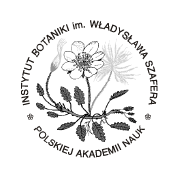 INSTYTUT CHEMII FIZYCZNEJ PAN
INSTYTUT CHEMII FIZYCZNEJ PAN
 INSTYTUT CHEMII ORGANICZNEJ PAN
INSTYTUT CHEMII ORGANICZNEJ PAN
 INSTYTUT FILOZOFII I SOCJOLOGII PAN
INSTYTUT FILOZOFII I SOCJOLOGII PAN
 INSTYTUT GEOGRAFII I PRZESTRZENNEGO ZAGOSPODAROWANIA PAN
INSTYTUT GEOGRAFII I PRZESTRZENNEGO ZAGOSPODAROWANIA PAN
 INSTYTUT HISTORII im. TADEUSZA MANTEUFFLA POLSKIEJ AKADEMII NAUK
INSTYTUT HISTORII im. TADEUSZA MANTEUFFLA POLSKIEJ AKADEMII NAUK
 INSTYTUT JĘZYKA POLSKIEGO POLSKIEJ AKADEMII NAUK
INSTYTUT JĘZYKA POLSKIEGO POLSKIEJ AKADEMII NAUK
 INSTYTUT MATEMATYCZNY PAN
INSTYTUT MATEMATYCZNY PAN
 INSTYTUT MEDYCYNY DOŚWIADCZALNEJ I KLINICZNEJ IM.MIROSŁAWA MOSSAKOWSKIEGO POLSKIEJ AKADEMII NAUK
INSTYTUT MEDYCYNY DOŚWIADCZALNEJ I KLINICZNEJ IM.MIROSŁAWA MOSSAKOWSKIEGO POLSKIEJ AKADEMII NAUK
 INSTYTUT PODSTAWOWYCH PROBLEMÓW TECHNIKI PAN
INSTYTUT PODSTAWOWYCH PROBLEMÓW TECHNIKI PAN
 INSTYTUT SLAWISTYKI PAN
INSTYTUT SLAWISTYKI PAN
 SIEĆ BADAWCZA ŁUKASIEWICZ - INSTYTUT TECHNOLOGII MATERIAŁÓW ELEKTRONICZNYCH
SIEĆ BADAWCZA ŁUKASIEWICZ - INSTYTUT TECHNOLOGII MATERIAŁÓW ELEKTRONICZNYCH
 MUZEUM I INSTYTUT ZOOLOGII POLSKIEJ AKADEMII NAUK
MUZEUM I INSTYTUT ZOOLOGII POLSKIEJ AKADEMII NAUK
 INSTYTUT BADAŃ SYSTEMOWYCH PAN
INSTYTUT BADAŃ SYSTEMOWYCH PAN
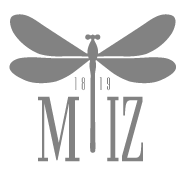 INSTYTUT BOTANIKI IM. WŁADYSŁAWA SZAFERA POLSKIEJ AKADEMII NAUK
INSTYTUT BOTANIKI IM. WŁADYSŁAWA SZAFERA POLSKIEJ AKADEMII NAUK
